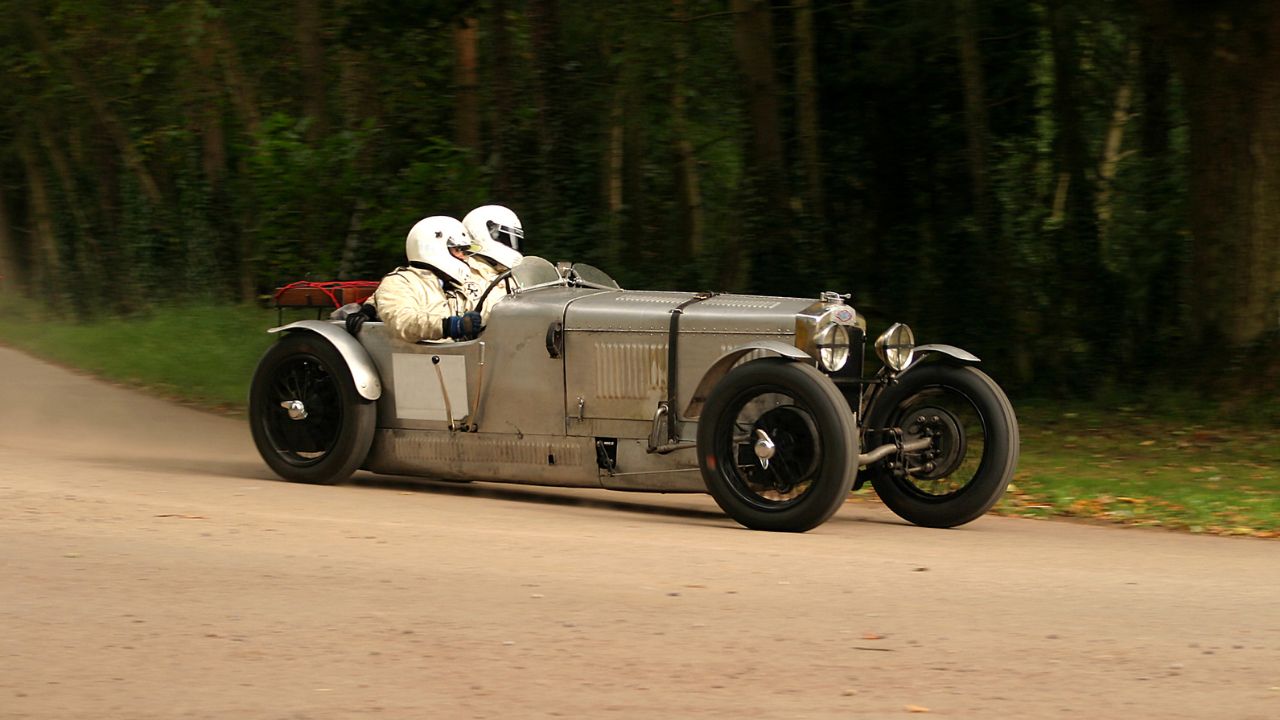
Classic muscle cars were once a popular option for those who wanted to go fast but still lacked the money to afford a traditional automobile. Convertible muscle car are still fun, but they offer all of today's classic features. Here are four of the most beloved convertible muscle car models. Continue reading for more details. We'll be looking at the Chevrolet Camaro and Pontiac Firebird as well as the Dodge Challenger and the Plymouth Superbird.
Chevrolet Camaro
The 1968 Chevrolet Camaro will be your classic muscle car. The convertible's engine is not a V8 like its predecessors. Instead, the Camaro's turbo-four produces 275 horsepower and 295 lb-ft of torque. It can get you from 0-60 mph in 5.5 seconds. But it doesn't have the distinctive V8 exhaust note. While the Camaro might not sound like a V8, the Turbo 4 still has attitude. Even though the car has advanced safety features, its real fun is found behind the wheel.
It's a sparsely furnished interior, but it's still comfortable. The cupholders are decently sized, and the back seat can be removed and used as additional storage space. The more expensive trim features hard plastics that provide a comfortable and quiet ride. It's easy to access the climate control center from the car's shift lever. Despite these limitations, the Chevy Camaro's interior is a great place to spend the day with your family.

Dodge Challenger
The Dodge Challenger was a two-door coupe imported from Mitsubishi. The Challenger was available with either a I-4 engine of 1.6 liters or a four-cylinder engine of 2.6 liters and 105 horsepower. The Challenger underwent a restyle in 1981 and survived until 1984, when it was replaced by the Chrysler Corporation's K-platform compacts and a Mitsubishi import. However, the Challenger's longevity made it a classic convertible model.
Before the Challenger was introduced officially in 2008, the company had previously planned to offer it convertible. As a prototype, the convertible Challenger was seen being taken to a scrap yard. It is now in the thirteenth year. Although its popularity has declined, the Challenger is still a very desirable muscle car. It can be modified to many extents. These are just a few of the features that make Challenger convertibles desirable options for muscle car enthusiasts.
Pontiac Firebird
The Pontiac Firebird was a 1967 convertible muscle car. The coupe was two-door and produced 165 horsepower. It was also equipped with optional Tri-Power motor. GM initially considered the Firebird a risky option as it wasn't sure how it would sell. It used the same basic principles as a standard car to create something totally different.
A new design was created for the 1968 model. It came with new side marker lights with wraparounds, a new front fascia, as well as a Pontiac Arrowhead Logo. The steering wheel and instrument panel were also updated. The Firebird became more functional thanks to this upgrade. The Firebird's performance-driven heritage was preserved despite the new design. Its distinctive design is still found on classic Pontiac cars.

Plymouth Superbird
The Plymouth Superbird is an American muscle car. It was built by Chrysler engineers to satisfy NASCAR homologation regulations. Its unique wedge-shaped nose and 2-foot tall rear spoiler made it possible to go at speeds previously unimaginable. In 1970, approximately 2,000 Superbirds were produced by the company.
There were three options for Superbird engines: the 440 Super Commando and the 426 Hemi-V8. The 440 Super Commando six barrel was also available. The 440 Super Commando Six-Barrel produced 390 horses and had three two-barrel carburetors. A 380 hp (240kW) 440 engine was also offered, as was a 375hp (280kW) engine.
FAQ
What qualifications do I need to become a mechanic?
You will need to pass several exams in order to become a mechanic. These include:
-
A test of general knowledge
-
A practical exam
-
An apprenticeship test
These tests are intended to make sure you have a solid understanding of the basics of mechanics before you can start your career as a mechanic.
Once you've passed these tests, you'll be eligible to work as a mechanic. You'll still need an apprenticeship. This will involve training in your trade.
You'll need to attend classes and workshops to learn everything you need to know about repairing vehicles. Experienced mechanics will also be required.
If you want to be a successful mechanic, it will take concentration and attention to detail. It is essential to pay attention to all aspects of vehicle repairs.
You'll need patience and persistence to become a successful mechanic. If you don’t like following directions, then this career path may not suit you.
However, if you love cars or enjoy working on them, you might be happy in this field.
Is it hard being a mechanic apprentice
It is not easy but it can be done quickly. There are many opportunities for advancement.
You need to have patience and perseverance. You will also need to be able fix cars, trucks and motorcycles.
Customers and family members can put a lot pressure on you. They want you to succeed. However, you shouldn't be forced to make difficult decisions.
This could be an excellent career choice for someone who enjoys fixing cars. This job allows you to make a decent wage and build up your company.
Perhaps you prefer a different route. Consider becoming a technician.
This is where you use your technical skills to support other workers. Technicians could benefit from your technical expertise to solve problems or teach new techniques.
Another option is to become an advisor in service. You will offer assistance and advice to customers when they bring cars to a garage.
It all depends on your goals. There are plenty of options available, and you can choose which suits you best.
How long is an apprenticeship for an automotive mechanic?
It takes approximately three years to complete an automotive mechanic apprenticeship. This includes two years at school and two years working as an apprentice. The first year is dedicated to learning the theory and practical skills of the trade. You will also learn to use tools efficiently and safely during this period. You'll spend the second year in on-the-job training, where you will gain experience in various trades. These periods will also give you the chance to take formal courses.
The final year is dedicated to earning certifications and qualifications in the field. These include NVQs, which are obtained after passing industry-specific exams. You can also get HNCs (Higher National Certificates), that cover subjects such as customer service, business administration, management, and business administration. Finally, there are City & Guilds certificates that are offered for those who wish to become qualified in certain trades.
Statistics
- 52% of Mechanics in the United States think their salaries are enough for the cost of living in their area. (indeed.com)
- According to the BLS, total auto technician employment is expected to exceed 705,000 by 2030. (uti.edu)
- The U.S. Bureau of Labor Statistics (BLS) reports that the job outlook for automotive service technicians and mechanics is expected to decline by 4% from 2019 to 2029. (indeed.com)
External Links
How To
How to safeguard yourself against auto mechanic scams
Scamming by auto mechanics is a big problem for consumers. On average, a consumer spends $1500 per year on auto repairs. This means that there is plenty of people willing to take advantage. You can avoid becoming a victim if you are able to identify the signs. Here are some tips to help you spot a scammer before they get their hands on your money.
-
Never pay upfront. Paying upfront to someone is a sign of fraud. It is best to ask for payment only after the work has been completed. If you're unsure whether something is legitimate, call the Better Business Bureau (BBB) at 1-888-322-8138. They can give you advice about how to proceed.
-
Ask for references. It's a great way to verify that you're dealing directly with a service provider who is trustworthy. Also, it's a good idea check online reviews. Make sure that any business you deal with has a positive reputation.
-
Conduct background checks. It is a good idea to do background checks before hiring. Check the BBB website to find out if there have been any complaints. Also, verify that the vehicle's license plate number belongs to the business owner.
-
Don't hesitate to walk away. Sometimes, even when a company appears legit they try to scam you into paying too much. If you feel that you have been exploited, don't be afraid to walk away. There are plenty of other businesses available to you.
-
Don't be fooled by "free" services. There are lots of companies that offer free estimates or free inspections. Many of these companies charge exorbitant fees in the future. Before you agree to anything, make sure you ask about any additional fees.
-
Avoid being pressured. If a company offers a great deal, they may think they have the right to charge you less. You should not be forced to buy anything if you find yourself in this situation.
-
High-quality products are what you want. It is important to look for high-quality parts when choosing a repair shop. You shouldn't use cheap brake pads if you need them. Instead, go to a shop specializing in brakes.
-
Get multiple quotes. It is important to compare prices from different shops. You'll have a better chance of finding a fair price when you do so.
-
Keep records. Keep track of every detail related to your repairs. You should keep track of all details, including receipts, invoices, warranties, and other documentation. Also, keep track of any telephone numbers and addresses you receive.
-
Stay informed